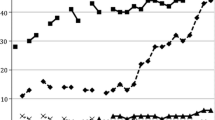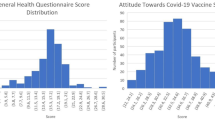Abstract
Background: Some believe that vaccinating young women against human papillomavirus (HPV) will increase their risky behavior. In more formal terms, vaccination lowers risk perception, and people compensate for their lower perceived risk by reducing other preventive behaviors.Purpose: We test several predictions from the risk compensation hypothesis in the context of vaccination behavior.Methods: We obtained a random sample of adults (N=705), interviewing them by phone just as the Lyme disease vaccine first became available to the public and again 18 months later. Analyses controlled for age, sex, education, and race.Results: Vaccinated respondents were less likely to continue engaging in two of five protective behaviors after vaccination. The frequency of these protective behaviors did not dip below that among the unvaccinated respondents.Conclusions: We found some evidence of regression (protective behaviors dropping, after vaccination, to levels reported by the unvaccinated cohort). However, we did not finddisinhibition (exceeding the risk taking of the unvaccinated cohort), the greater threat to public health. Although we will not know for several years what effect HPV vaccination has on other behaviors, if any, data on other vaccinations can offer critically important information in the interim.
Similar content being viewed by others
References
FDA:FDA Licenses New Vaccine for Prevention of Cervical Cancer and Other Diseases in Females Caused by Human Papillomavirus. Retrieved August 1, 2006 from http://www.fda.gov/bbs/topics/NEWS/2006/NEW01385.html
Koutsky LA, Ault KA, Wheeler CM, et al.: A controlled trial of a human papillomavirus type 16 vaccine.New England Journal of Medicine. 2002,347:1645-651.
International Agency for Research on Cancer:IARC Working Group on the Evaluation of Carcinogenic Risks to Humans. Human Papillomaviruses. Lyon, France: IARC Science Publications, 2006.
Pollitt K: Virginity or death!The Nation. 2006, May 30. Retrieved February 2007 from http://www.thenation.com/doc/20050530/pollitt
Wilde GJS:Target Risk. Toronto, Canada: PDE Publishing, 1984.
O’Neill B, Williams A: Risk homeostais: A rebuttal.Injury Prevention. 1998,4:92-3.
Evans WN, Graham JD: Risk reduction or risk compensation: The case of mandatory safety-belt use laws.Journal of Risk and Uncertainty. 1991,4:61-3.
Lund AK, Zador P: Mandatory belt use and driver risk-taking.Risk Analysis. 1984,4:41-3.
National Institutes of Health: NIH Consensus Statement.Interventions to Prevent HIV Risk Behaviors. 1997,15(2):1-1.
Wilson TE, Gore ME, Greenblatt R, et al.: Changes in sexual behavior among HIV-infected women after initiation of HAART.American Journal of Public Health. 2004,94:1141-146.
DiLillo D, Tremblay G: Maternal and child reports of behavioral compensation in response to safety equipment usage.Journal of Pediatric Psychology. 2001,26:175-84.
Brewer NT, Weinstein ND, Cuite CL, Herrington J: Risk perceptions and their relation to risk behavior.Annals of Behavioral Medicine. 2004,27:125-30.
Brewer NT, Fazekas KI: Predictors of HPV vaccine acceptability: A theory-informed systematic review.Preventive Medicine (in press).
Reyna VF, Farley F: Risk and rationality in adolescent decision making-Implications for theory, practice, and public policy.Psychological Science. 2006,7(1):1-4.
Turbin MS, Jessor R, Costa FM, et al.: Protective and risk factors in health-enhancing behavior among adolescents in China and the United States: Does social context matter?Health Psychology. 2006,25:445-54.
Steere AC, Sikand VK, Meurice F, et al.: Vaccination against Lyme disease with recombinant Borrelia burgdorferi outer-surface lipoprotein A with adjuvant.New England Journal of Medicine. 1998,339:209-15.
Harper DM, Franco EL, Wheeler C, et al.: Efficacy of a bivalent L1 virus-like particle vaccine in prevention of infection with human papillomavirus types 16 and 18 in young women: A randomised controlled trial.Lancet. 2004,364:1757-765.
Brewer NT, Chapman GB, Gibbons FX, et al.: A meta-analysis of the relationship between risk perception and health behavior: The example of vaccination.Health Psychology. 2007,26:136-45.
Author information
Authors and Affiliations
Corresponding author
Additional information
This study was supported by grants from SmithKline Beecham, Inc. and the American Cancer Society (MSRG-06-259-01-CPPB).
About this article
Cite this article
Brewer, N.T., Cuite, C.L., Herrington, J.E. et al. Risk compensation and vaccination: Can getting vaccinated cause people to engage in risky behaviors?. ann. behav. med. 34, 95–99 (2007). https://doi.org/10.1007/BF02879925
Issue Date:
DOI: https://doi.org/10.1007/BF02879925




